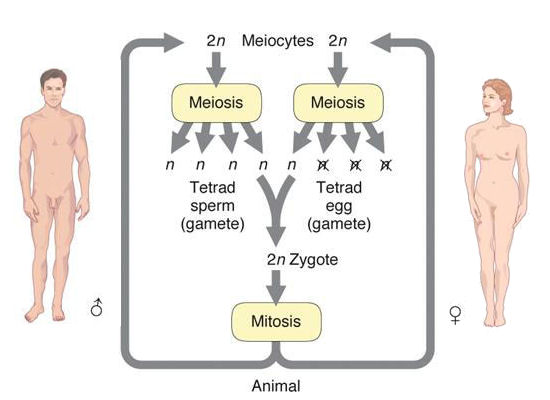
Reproductive life cycle in animals
Dioecious organisms occur as two separate sexes, male and female. They are formed by the union of two haploid (n) gametes (each with one set of chromosomes), an egg from the female and a sperm from the male, to form a diploid (2n) zygote. Cells in the zygote undergoes a series of duplication divisions (mitosis) to form the adult. In the germline of the adults, diploid meiocytes undergo a series of equational & reduction divisions (meiosis) that produce four haploid gametes. In humans, as in most mammal species, all four male gametes survive, whereas typically only a single female egg grows to maturity.